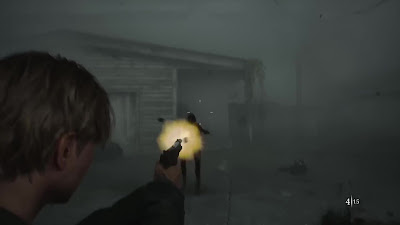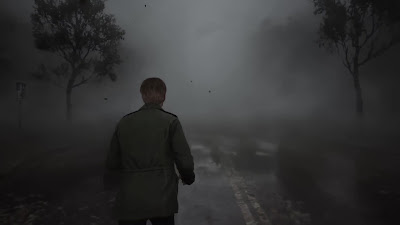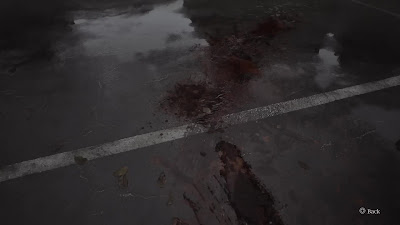To this day, it is hard to find another game from the early 2000s that speaks to gamers quite like Silent Hill 2. It’s not just an ordinary survival horror video game but a much more deeper experience than a mere fog; stalking fish-eyed monsters, and deeply embedded sorrow. Although inherently flawed, Silent Hill 2 succeeds in doing something astonishing: It turns you into an emotionally naked state, which is a skin-crawling feeling, instead of cheap jump scares. Let’s try to understand why this game continues to plague its player’s minds by focusing on the experience-defining moments and mechanics that are less talked about.
James Sunderland: An Unwilling Combatant
The combat in Silent Hill 2 is clunky at best, and it is designed that way for specific reasons. He is James Sunderland and he is a reluctant survivor. James Sunderland is no hero, he is a grieving widower losing his sanity with every minute filled with anguish over his unprocessed guilt and nostalgia. For James, pulling off a plank of wood to swing at enemies or even shooting a gun is an act of sheer desperation. His fighting ability is fully ineffective while his survival chances are non-existent. He is fighting while grazing through life. His aggression highlights the fact that enduring matters, not skill in Silent Hill. As opposed to the rigorously trained hunters in other horror survival video games such as James Sunderland, who has to aim a weapon and gawks in horror as each fight triggers.
This deficiency in talent serves to increase the sense of unease surrounding the game, tension that is easy to overlook. The first meetings with the Lying Figures, which are monstrous humanoid creatures, are terrifying because they are so unpredictable. The game is designed in such a way that when you’re swinging your weapon or getting ready to attack, you can be met with pure doom. A putrid sense of fear overwhelms me when then I think of all the unspeakable occurrences lying dormant in the game. The player is immediately and awkwardly thrust into a confrontation with James, revealing his pain polishedness and eating fragile heart, when he’s thrust into the brutal evisceration of ‘mapper’ monsters, realized as daring and determined. Each time a player manages to get through the beasts, it seems as though a miracle has happened.
The World as a Character: The Shroud of Dread and Suffering
Fog and Silence is one of Silent Hill 2’s greatest strengths, and the remake does not lack in this department as well. The town always felt like the decaying community that it is. The rotting corpse of a town enveloped in fog makes the entire place feel like something is very wrong. I like how the cracked pavements and flickering street lights add to the sense of dread that looms over the place and engross the fog in unexpected ways.
However, what baffled me was how the modern visuals of the remake managed to enhance and diminish the power of the original at the same time. Fog, for instance, is no longer a technical necessity. It is a stylistic. The remake may have done a better job by making it thicker and more beautiful as opposed to the original’s raw, pixelated strangeness; but in doing so, it has also lost the beauty it possessed. In the original game, fog acted as more than just a visual barrier as a metaphor for James’ inability to confront his past. While it is still useful here, the impact feels a tad weakened because it is far too prettified.
Just like that, the interiors of Silent Hill’s dilapidated buildings have been recreated, but these are almost too detailed. Original low-resolution textures added some mystery to the game that allowed the imagination of the player to fill in the gaps. The remake eliminated that with modern textures, and while it is undoubtedly terrifying in nature, feels less intimate.
A Descent into Grief and Guilt
It would be a mistake to classify Silent Hill 2 as a simple horror game. At the heart of Silent Hill 2 Remake is a story of grief and pain, told with intense pain through the journey of the main protagonist who fights with his mind trying to bury his memories. Thankfully, the narrative’s emotional crux is preserved in the game, so James’ journey is as harrowing as ever. What stunned me, however, was how often ordinary gameplay portions seemed to advance the narrative’s themes in some subtle manner.
Let’s take the healing, for instance. In many games, using a healing item provides relief, as there is a moment of reset before proceeding further. This is not so in Silent Hill 2. It’s infused with desperation. James does not simply breathe heavily; his breath is a reminder of how weak he is. Now the act of bandaging his wounds is laden with symbols of his humanity. With every sip of the health drink, the players witness his pain – suffering not just physically, but emotionally as well.Then, there’s the flashlight, a common item that comes with a lot of responsibilities. It is the player’s lifeline, but a means of targeting the danger at hand, which brings forth the monsters. The fear of action is such, that the consequences can be brutal, reincarnating the phrase – risk it all, lose it all.





